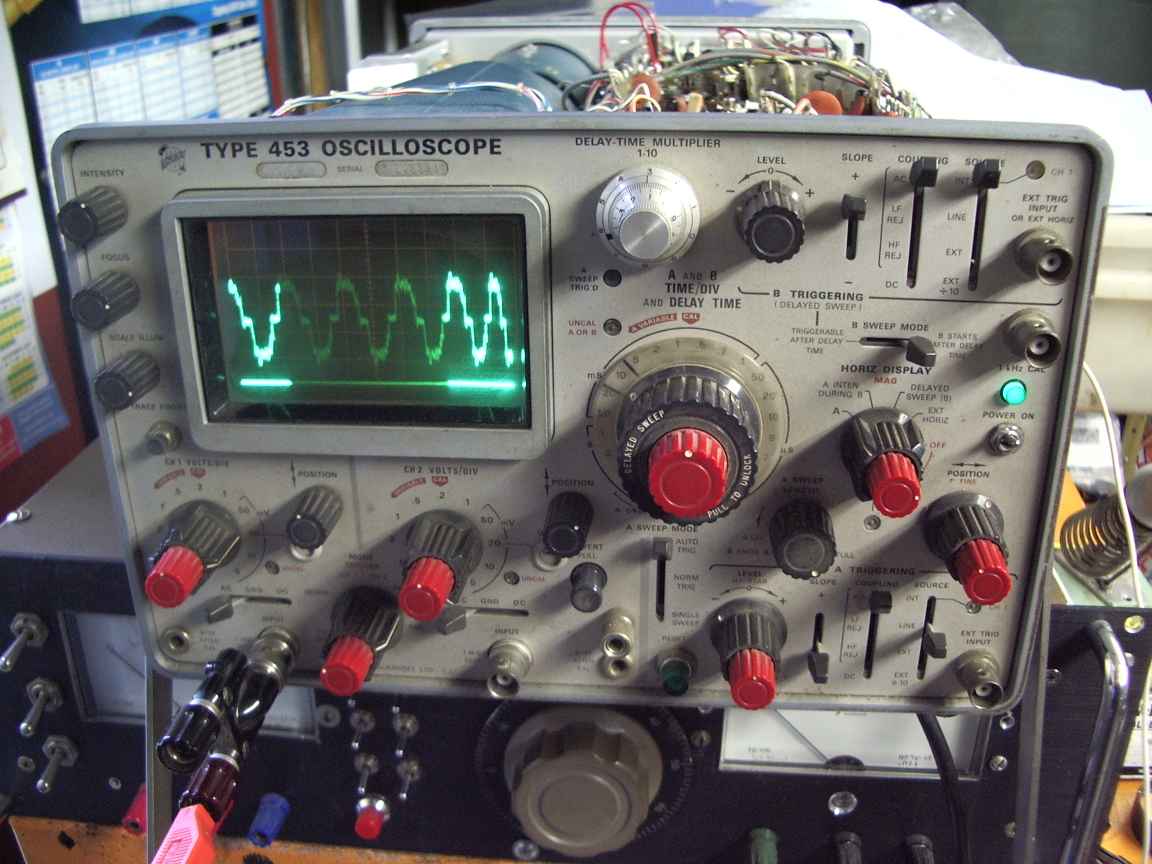 | 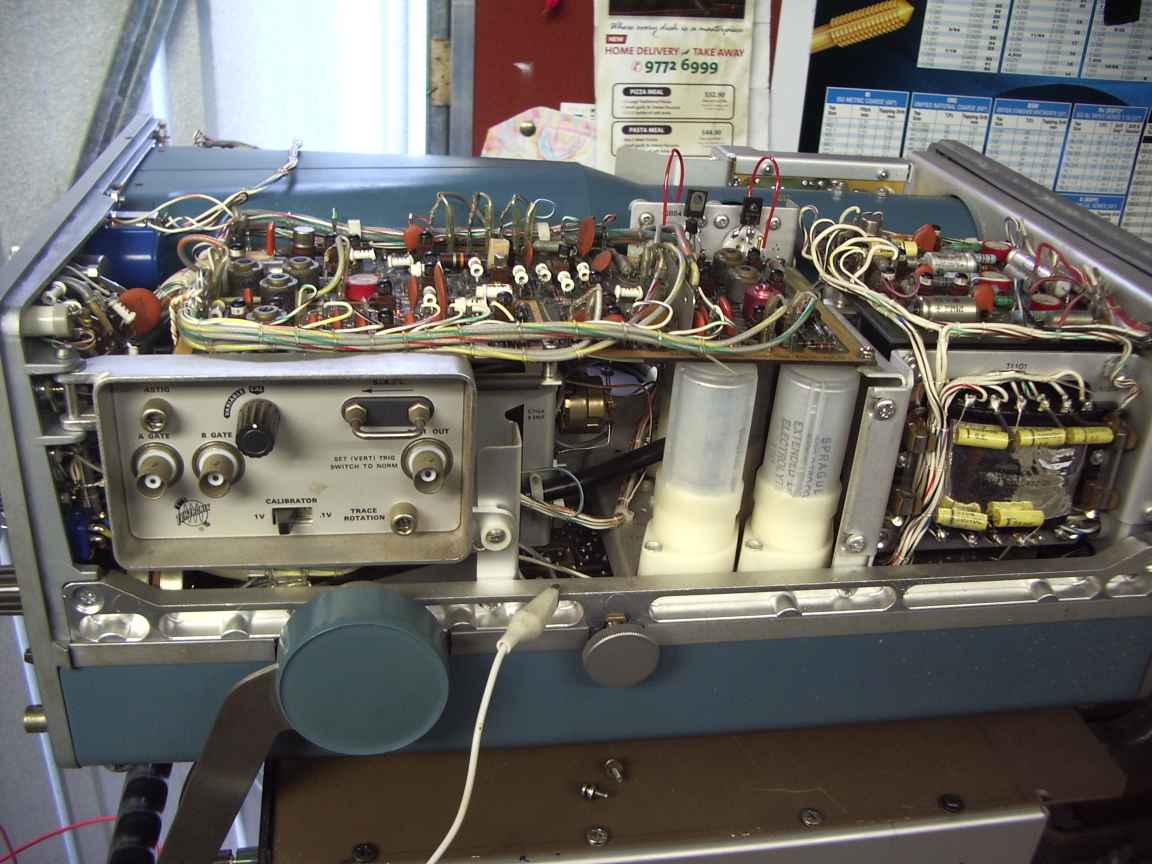 | 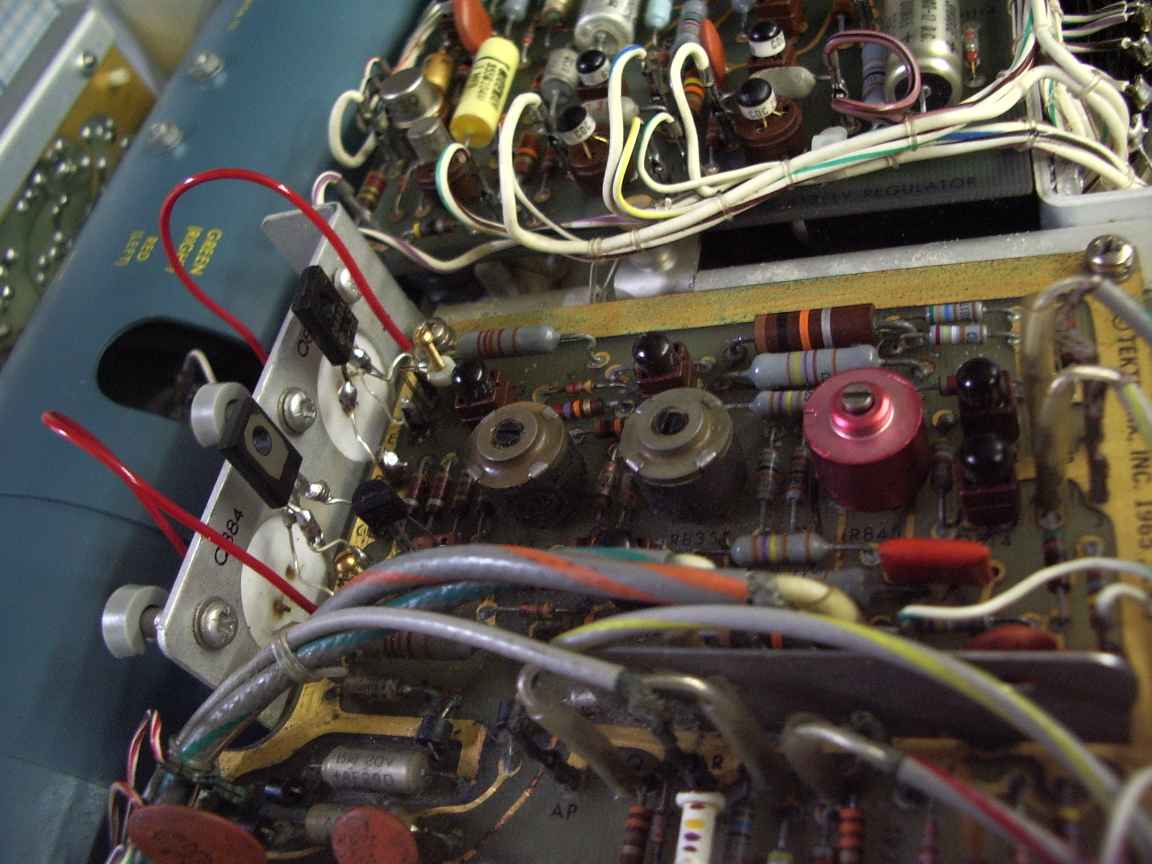 |
| Not dead yet, Im alive !!! | side panel with aux controls and outputs | white ceramic (BeO?) heatsinks and my replacement deflection transistors |
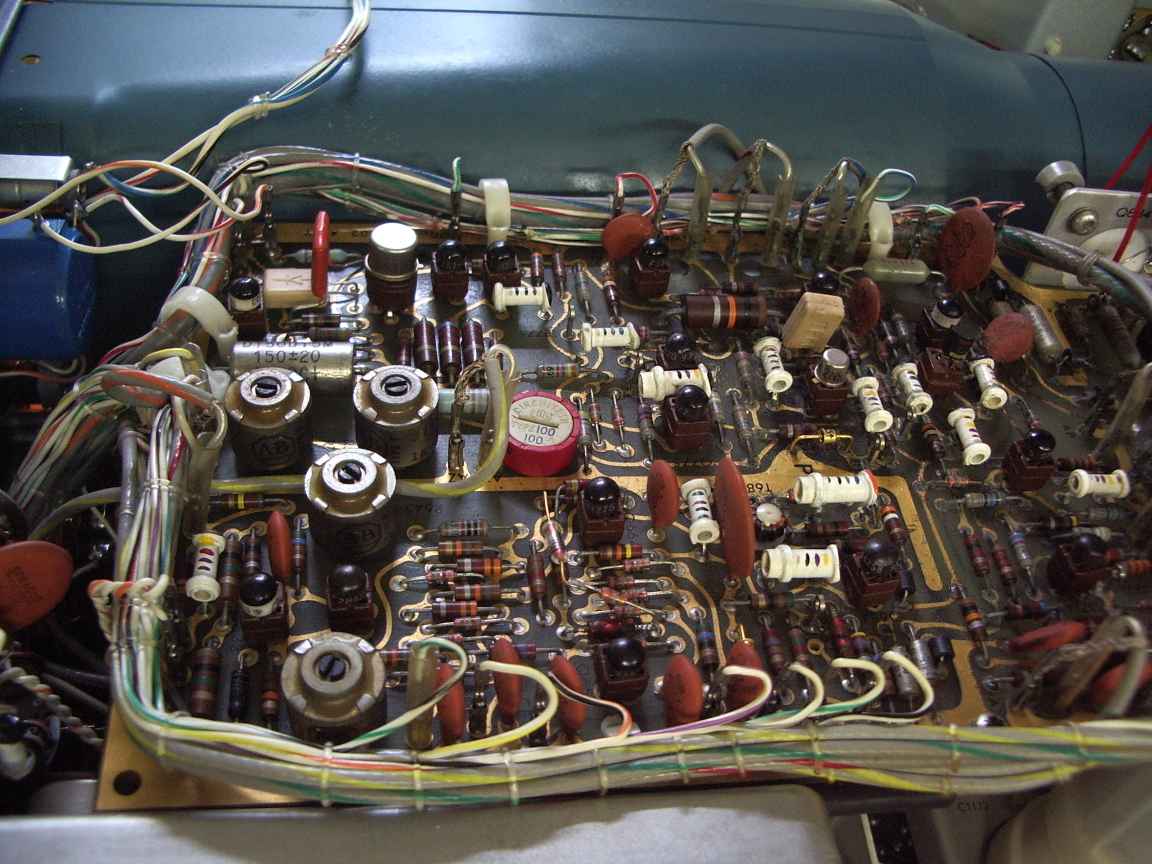 | 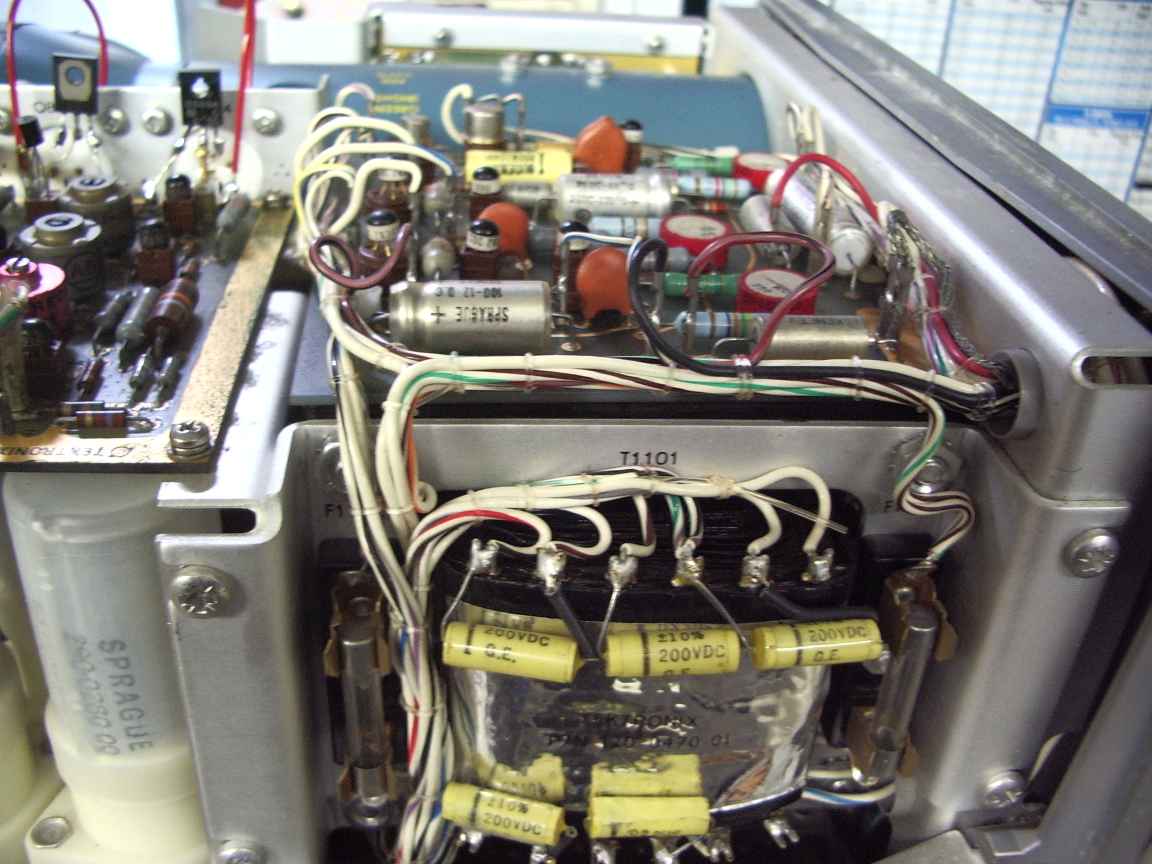 | 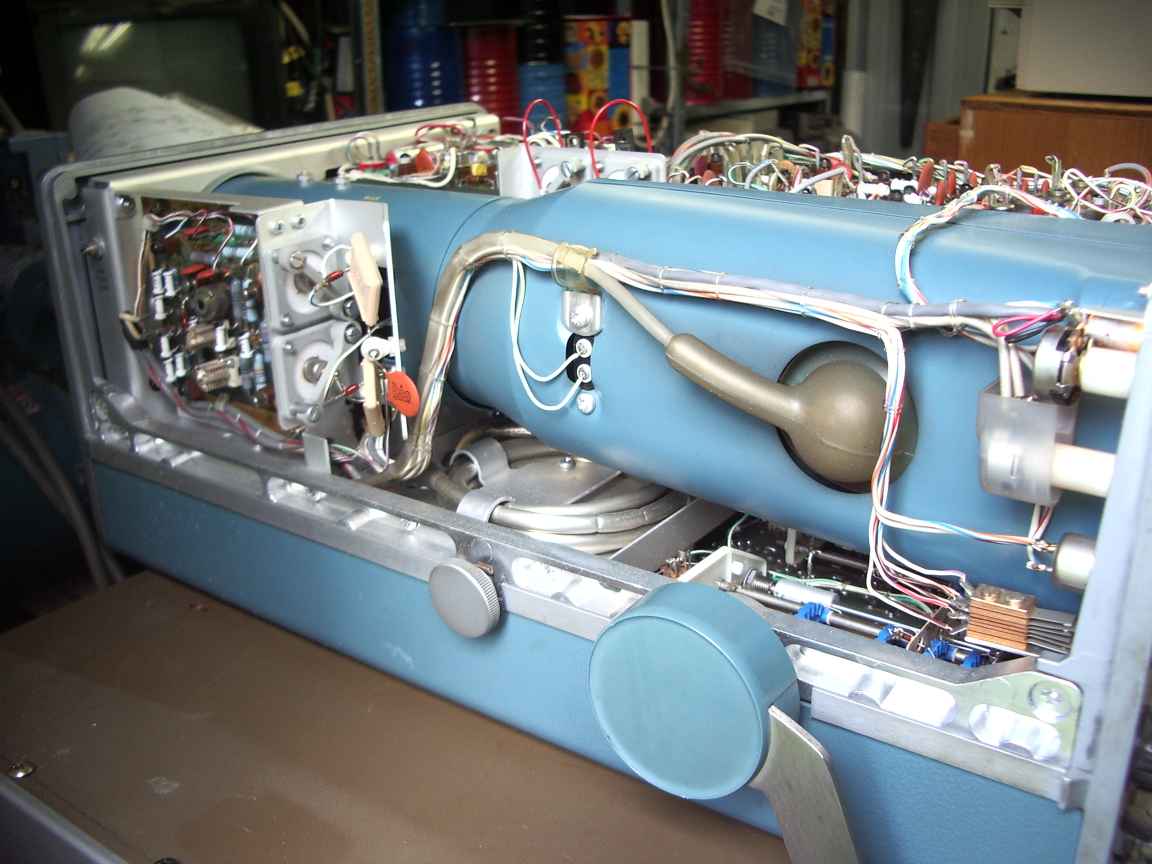 |
| horizontal deflection and triggers and rat's gunk | good old linear PSU | view of vertical amp and crt |
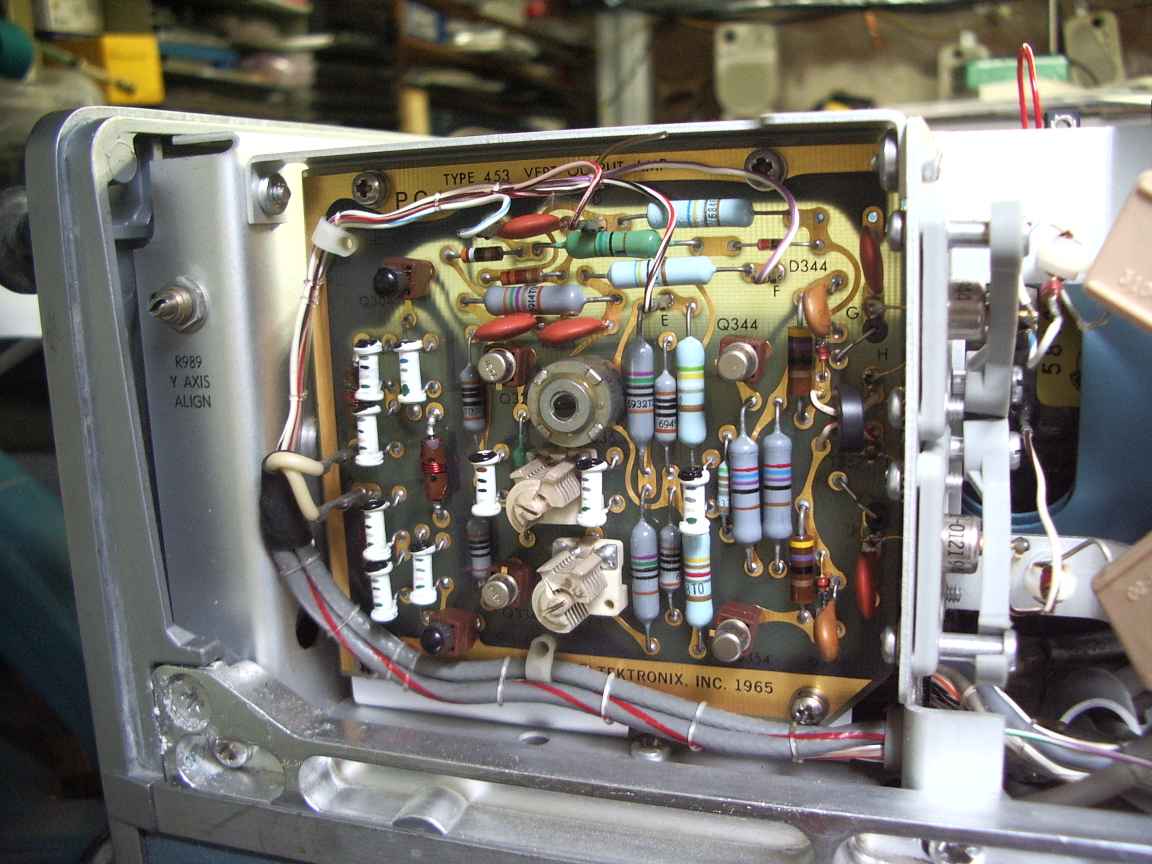 | 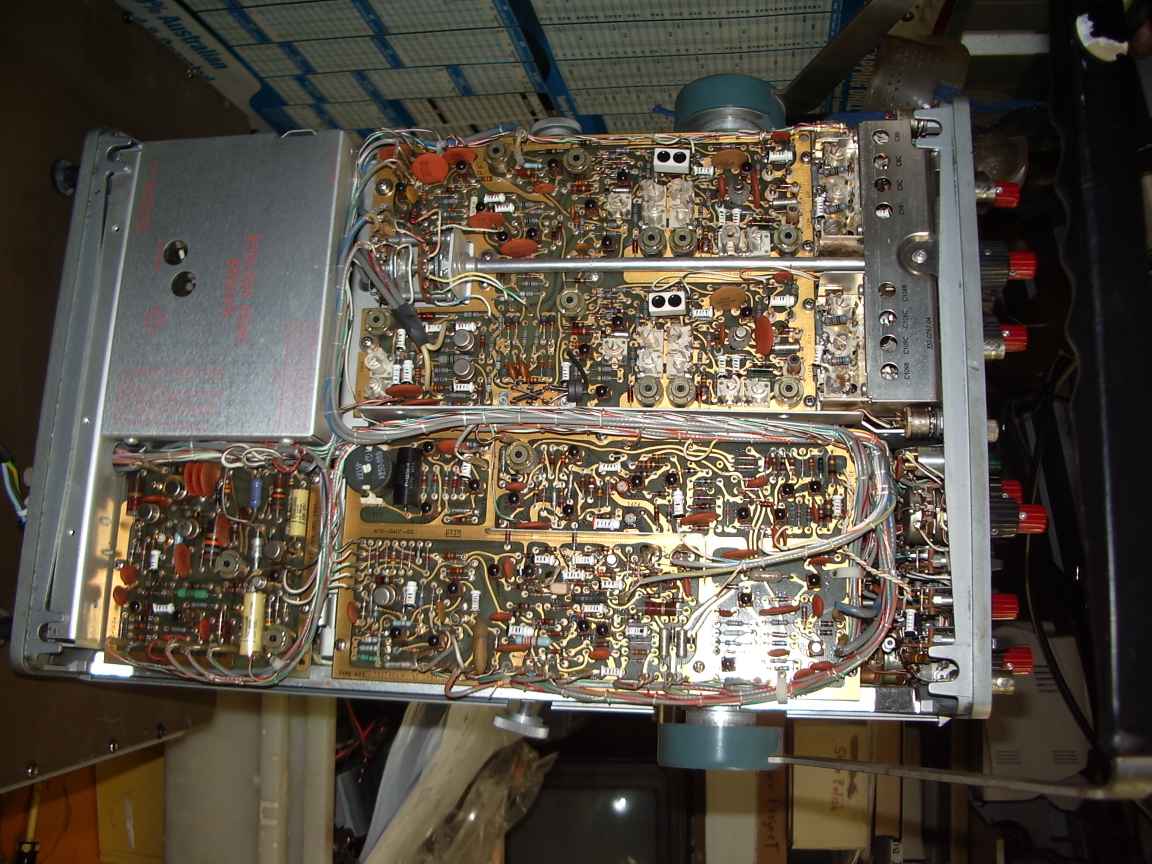 | 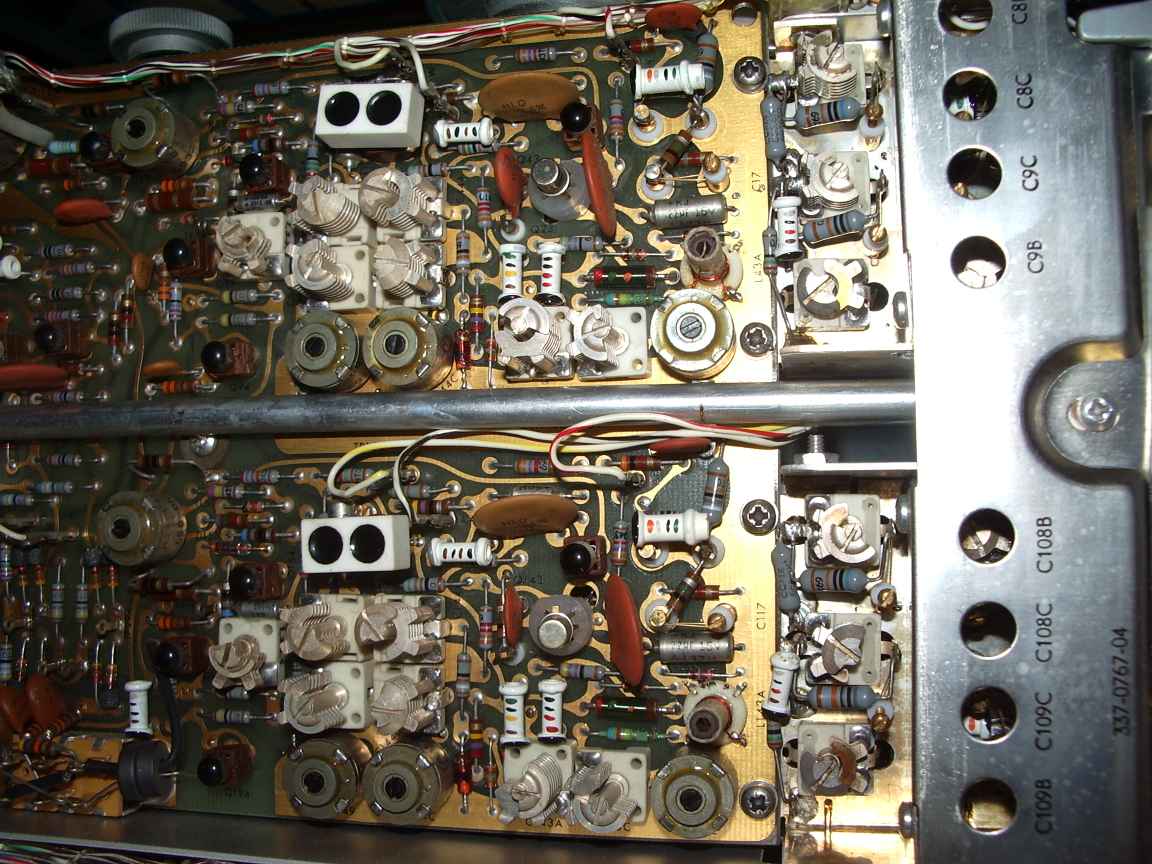 |
| vertical deflection amp | underside vertical input amp | underside vertical input amp |
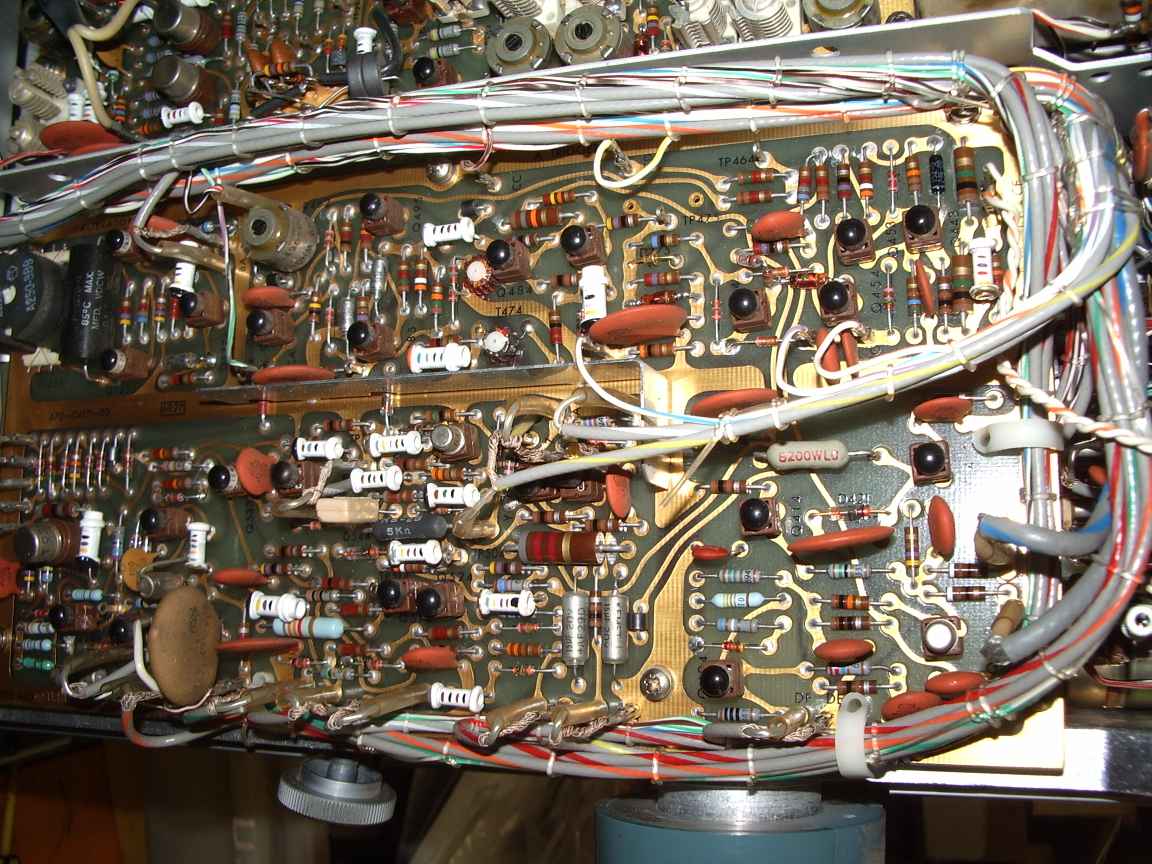 | 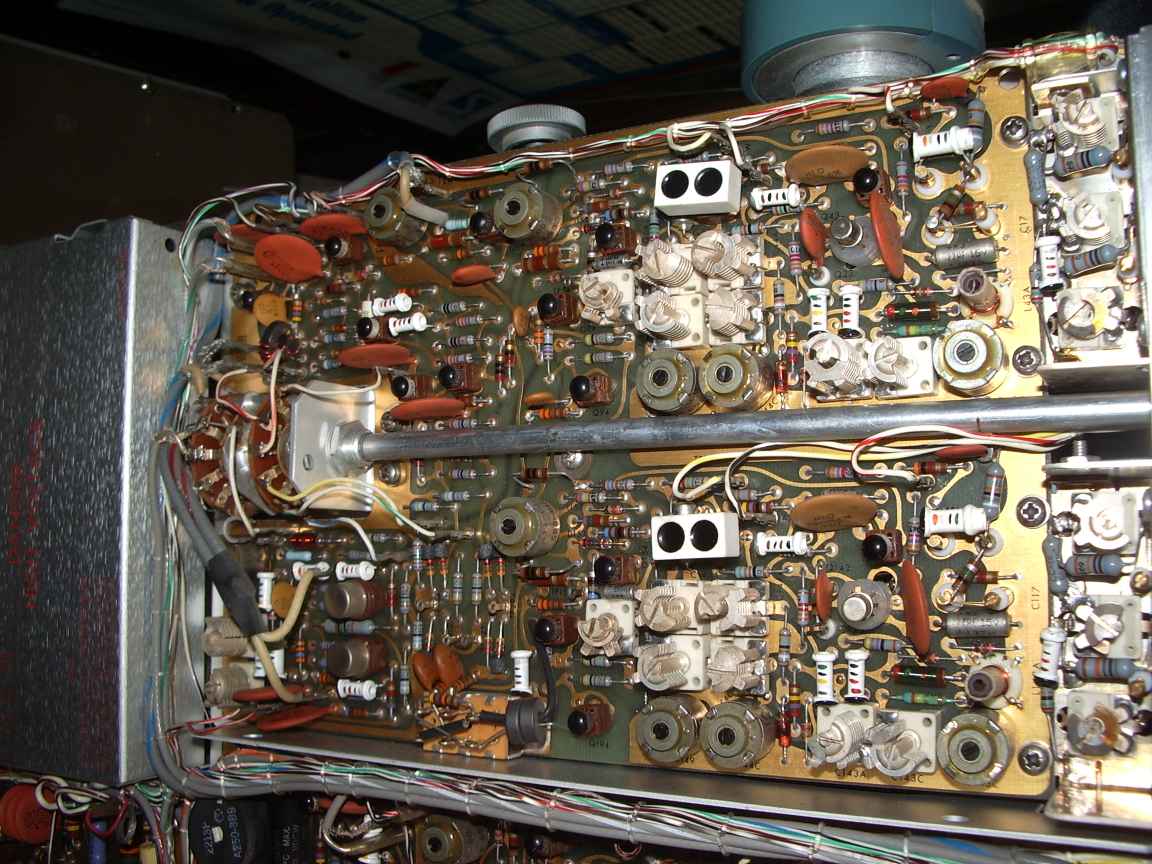 | 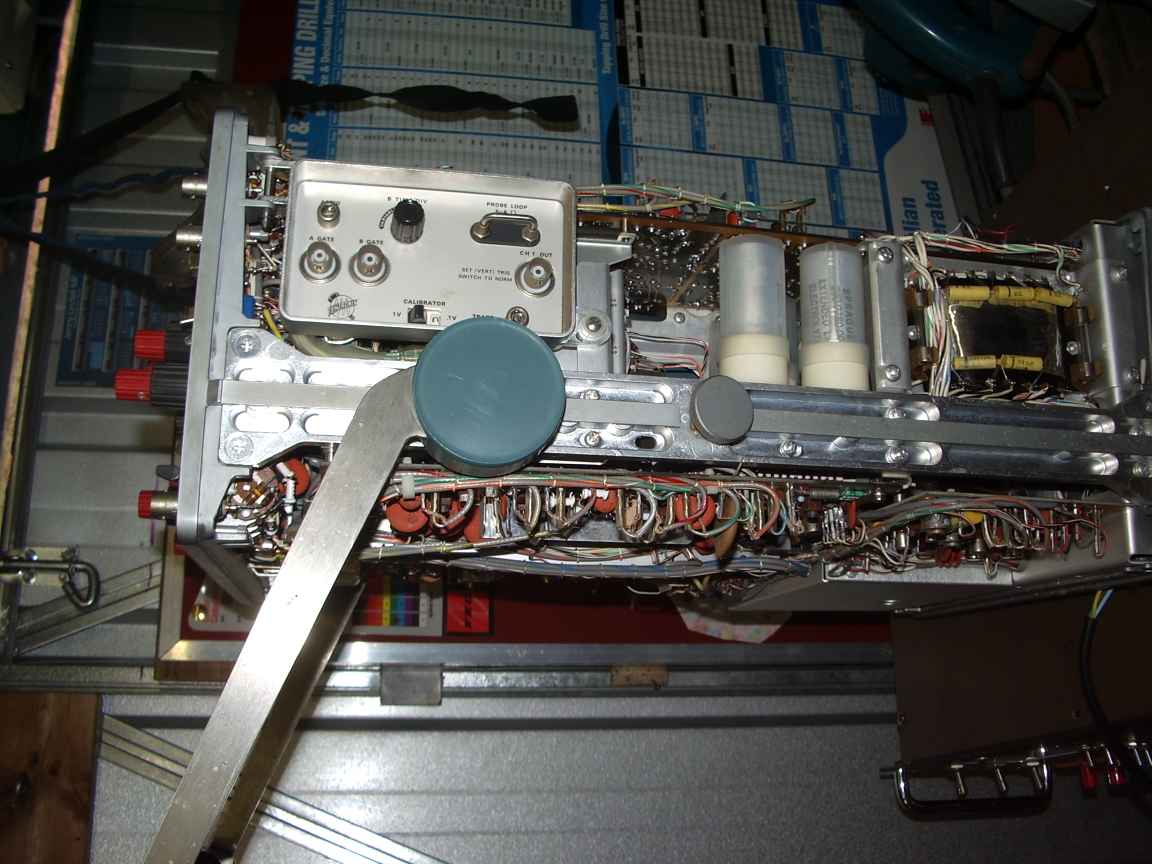 |
| horizontal amps,triggers,timebase | underside vertical input amp | sideview showing cast aluminum chassis |












